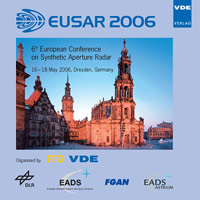Polarimetric Variability of Simulated Vegetation Ground Cover
Conference: EUSAR 2006 - 6th European Conference on Synthetic Aperture Radar
05/16/2006 - 05/18/2006 at Dresden, Germany
Proceedings: EUSAR 2006
Pages: 4Language: englishTyp: PDF
Personal VDE Members are entitled to a 10% discount on this title
Authors:
Ainsworth, Thomas L.; Lee, Jong-Sen (Remote Sensing Division, Naval Research Lab, Washington, DC 20375, USA)
Williams, Mark L.; Payne, Tim (IMES Group, DSTO, ISRD, 71Labs, West Avenue, PO Box 1500, SA 5111, Australia)
Abstract:
It is observed that decompositions of fully polarimetric SAR imagery can display spatial variation across crop fields that are to all intents and purposes homogeneous. Seeking to interpret such observed variation we have constructed a first order scattering model in the distorted Born approximation. The model has been used to perform coherency matrix calculations for a complex vegetation canopy above a rough soil surface. Polarimetric decomposition techniques have been used with simulated coherency matrices, and by varying scene biophysical parameters we have charted trends in decomposition. Polarimetric decompositions display sensitivity to scene parameters such as canopy depth and soil roughness. However the calculations reveal that, consistent with observation, polarimetric decomposition is likely to display greatest sensitivity to crop-type, rather than variation of the studied parameters within crops of a single species.


